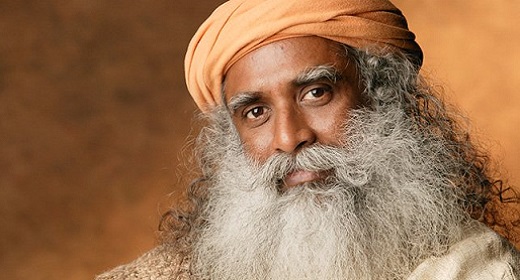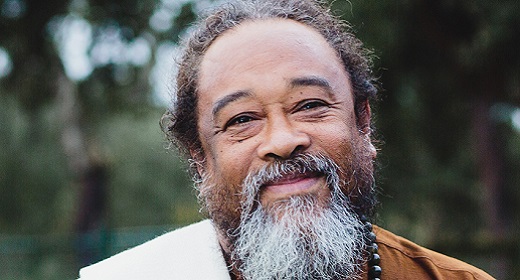Dr. Clarissa Pinkola Estés is the author of the best-seller Women Who Run with the Wolves: Myths and Stories of the Wild Woman Archetype…
about which Sam Keen says “Recommended for men who dare to run with women who run with the wolves.” She is a cantadora, a storyteller, a keeper of stories. She is also a Jungian analyst. On a recent book tour to Seattle, she spoke with M.E.N. Magazine editor Bert Hoff about men, women, and the hope of men and women coming together to share myths of power.
Bert: What is the “wild woman”?
Dr. Estés: She is … God.
Bert: Are you talking about finding a god within?
Dr. Estés: I would say it in a little different way. I would say that if you look in a woman’s face, the god shows in her face. You see this furred criatura right behind her visage, right behind her eyes. If you are an intelligent person, you will be respectful. If you are not an intelligent person and the woman is in her biting instinctual nature, she may bite you. Or if she is afraid of you, she may run away and never come back to you again. If you are respectful of her, she will come around and find out who you are. She will develop a relationship with you.
Bert: How does the wild woman compare to the wild man in Robert Bly’s Iron John?
Dr. Estés: My sensibility is that what is wild is nature. We need to see and understand that whatever stands behind nature is what is god. Nature itself, it is the manifestation. We see things about nature that are beautiful, like your blue sky outside today, and it fills us with almost a prayerful excitement. When I look at it, I feel still. I have seen this sky every day of my life and I am still in awed by it. That is what the wild is — this intense medicinal beauty. To look at it makes you feel whole. To hear it, if it is ocean or water running in a stream, is to feel made whole again. To see a thunderstorm or a lightning storm is to somehow be energized by it. Even tornadoes and earthquakes — to be rocked to your very foundations by the power made in all these things. If that is the wild and if that is in every human being, then a man and a woman would essentially be no different from one another at the very elemental core.
But the personality and the culture that grow up around each, then of course, makes things more problematical because there are extreme differences in the way that the personality is developed. And I think personality has a different tone for men and women, period, regardless of culture, any culture. I have lived with at least 17 different native tribes. In many of them there is not too much differentiation in feeling tone between the young women and the young men, although some of their duties are different.
Bert: Do you think it’s important for men to read you book?
Dr. Estés: Yes, I do. Sam Keen and I had a conversation about this. I also received a very nice letter from Robert Bly a couple of weeks ago, saying that he really liked the book very much. People were recommending it to him, and he was recommending it back.
I feel that men are as much of a mystery as women. Once we get past a certain amount of self-consciousness and protection of certain sacred cows by each gender, we could have a real conversation, maybe, for the first time ever in the universe, in this century. What is our common concern? Why are we here with one another? What is the reason for being with a person of the opposite gender? Whether it is in a love relationship, or a brother and sister relationship, or a father/daughter relationship, or a friend/friend platonic relationship does not matter. But what could be the, you may say, the chemical catalyst in a relationship with “The Other?”
I would like men to read it, and men do. They not only read the book, they buy it for their lovers and read it together. Whether that lover is their wife or their anamarata for the moment. I have also received some letters from men saying, “Do not say that you wrote this book for a women. I read it and it applies to me.” It makes me smile, because of course it would. It would apply to their feminine nature, very much.
Bert: You talk in your book about the animus, wondering whether some feminists have gone too far in saying that the animus is culturally induced. You talk about women developing a masculine side.
Dr. Estés: One of the things that I see much more of in the younger generation of women is that they do not have to struggle as much for their right to be free within the family. But they still have to struggle in the outer world. Even though the family may have changed, there are plenty of people who have not. So they’re struggling to avoid things in the outer world that would be efforts to diminish them.
It seems to me that what we call masculine development is the ability to take ideas from one’s inner life and implement them in the outer world. That’s how I understand masculine development within. Their ability to manifest in the outer world; to speak up for themselves about things that matter that are important. To be able to take their book, their art, the products of their imagination into manifest form in the outer world. To be able to rouse themselves from comfortable situations. To see what is needed out in the world and to attend to it. Those are manifestations of adequate animus development.
Some men as you know, have much more feminine nature than others. Jung drew a circle and divided it into four parts, and said a man is three-quarters masculine and one quarter feminine. A woman is three-quarters feminine and one quarter masculine. And that’s a good start. The problem is that he says this is the way it should be, and that’s not the way it is. It is too rigid a form. Some men I have met are three-quarters feminine and one-quarter masculine, and the one-quarter masculine they are — jump back — very strong, fuerte, strong! But they have tremendous feminine development because it is who they are. It is from the souls, not an overlay from cultural family. Gloria Steinem is a great example of a woman who has far more masculine development then she has feminine development. Although now her feminine development appears as though it is coming now. She is 55 -60 years old and now it is coming. So whatever we have, as you know, the role in life is to develop it to its fullness. But also the challenges is to develop its balance, which is also its opposite.
Bert: That brings to mind something you said about Jung and the soul being masculine. I had a problem with Robert A. Johnson’s view that for the man, the soul is the feminine. To me, it makes more sense to think of the feminine as the gateway and the portal, that which one must pass through in order to find the soul.
Dr. Estés: We cripple ourselves to say the soul is always masculine or the soul is always feminine, or it’s always three-quarters this way and one quarter that way, or it’s always 50/50. It never is any of those. It is ineffable and you cannot really talk about it. We make pictures and diagrams and we say, “well, if you could talk about it, this is what it would look like.” But in reality, we are reaching into a dark bag and we are feeling what is in there, and we’re saying, “I think it must be this or I think it must be that.” And we are trying, hopefully, in a poetic way, because we can never describe in common words, what it is that we feel and see. But there is no, there cannot be.
I say also this about the concept of soul-making that my colleague James Hillman talks about. I do not agree with soul making, because the soul is, the soul is complete. It is never doubted, it is never lost. A chink in the transmission may occur or someone may sever the conduits to the soul, but the soul remains here, it never goes The ego may go. The ego becomes injured. The spirit may also become injured, but the soul remains. I don’t think there is soul making. I think there is consciousness-making. But I think the soul is incredibly ineffable. It’s an interesting idea, soul making, but I think ultimately, it may not describe the process.
And yet, for people like Hillman, Bly, Robert Johnson, Gillette and Moore and myself, we must have the ability, like all poets, to move through different images as we develop an idea. So that the idea Johnson had 10 years ago, he could move away from and develop a new idea, the more clarity he has. Jung did it all the time. If you read Jung’s works you will see him constantly contradict himself because he is developing as he goes along. So I always think that, whatever metaphors we use, it will be very interesting to see if we still believe them, or if we have not found better ones in 10 or 20 years.
Bert: That process you describe of reaching in a bag and trying to describe the soul brings to my mind theologians trying to describe God.
Dr. Estés: Yes! Yes! There is a story in my book, “The Four Rabbinim.” They all wish to see God. The story evolves around the sacred wheel of Ezekiel. They are taken by angels to the seventh vault of the seventh heaven, and each has an experience of God. And the experience is shattering for three of them. Not because they are bad people, but because their fantasy of what God is, was shattered. There is a saying, do not come too close to the inevitable. Ultimately, it is such a phenomenally vast force that it’s like what Baba Yaga says to Vasalisa in one of my stories, “but remember, too much knowledge can make a person old too soon.” It is dangerous. You just have to wait. You cannot always pursue it like you would climb a mountain. Sometimes you must just wait until something of it comes to you and fills you, and then you begin to understand.
Bert: What do you think about the mythopoetic men’s movement?
Dr. Estés: You know, I have never understood the phrase “mythopoetic.” Many people have asked me in interviews what I think of the men’s movement, and I continue to say, “I have not met the men’s movement. The men’s movement has not come to my door and said ‘we would like to introduce ourselves to you.'” But I do know men who are in groups with other men, who are there trying to learn about life and their own deep well of being.
Mythopoetic is, I think, James Hillman’s word again. It is for me an intellectual word I do not understand. I understand mythology. I understand stories. I understand poetry. I understand that they cut close to the bone. I am a poet who became a psychoanalyst. That is my background. I am a cantadora. I am a storyteller. It comes from my feet, upward, not from my brain, downward. So I think that “mythopoetic” means that you use mythology to try to understand something about deep aspects of your nature.
I interviewed Robert Bly in 1990. I can remember saying to him, “Now, what about the men’s movement?” And he said, “No, it’s not men’s movement.” And I said, “Well, what will you call it?” “Men’s work, just work with men, that’s all.” And, I really like that. I like that he called it work with men. Mythopoetic is too big a word. It is better to have simpler words.
I would like the men’s movement to come see me. I would like to meet them. It, them, all of it. I would! I would! I feel that they are hidden, somehow, from me. That they do not come where I am. They go away by themselves.
Bert: I hope that this interview will start the process of bridging that gap.
Do you see any connection between the work that you’re doing, women’s tales of power, and men’s work?
Dr. Estés: Oh yes. Very much so. The way I understand my work is that it is like putting out food — a certain kind of food. People who have great hunger for that food will come. What I think for men and women is food, is healing food actually, is stories. Stories will draw people as they always have. It isn’t a new phenomena. All the novelists and all the radio programs and all the television for years and years has been nothing but stories. Some of it pitiful story, broken off story, shattered story, incomplete story, and some of it very foolish story. But nevertheless, enough substantial story that people have been attracted to it. It is said that the grand storytellers of your generation and my generation is the cinema. Teenagers and young adults aren’t going to grandmother and grandfather anymore to sit in the kitchen and listen to their stories. We go to the cinema to see the cliffhangers on Saturdays.
Your grandmother and grandfather did not have the same news at hand that we have now. We are now the new grandmothers and grandfathers and what we have available to us are audio tapes, newspapers, letters, gatherings of people, books that are written. We have means to extend the kitchen out into the world, or to extend the hearth place or the bonfire out into the world, and to gather together people who would ordinarily not be within our reach. So it is actually a very exciting time.
Bert: In your story of Vasalisa, you talked about the women’s need for initiation to develop her intuitive life, to leave the protective, “too good” mother, to dive into the unknown. How does that compare to male initiation that Robert Bly and Joseph Campbell talk about, of separating from mother and joining the community of men?
Dr. Estés: I do not agree with that “separate from mother” business. I think it is silly. It’s the only thing that I can think of that I feel that there has been inadequate dialogue about. The external mother of men needs to be separated from the archetypal ever nurturing mother which is, in my mind, the same as the “too good” mother in Vasalisa. It is an internalized mother that must be distanced from, otherwise one will remain like a child forever, who will think that one is the center of the universe and should always be taken care of. One will always want to suck at the tits of whatever womanly — womanish — element that comes along in their life. And that goes for women as well as men. There’s not a difference. I would like to see the emphasis on the internal archetypal mother as the one who needs to be separated from.
Because, I have learned that what my own mother told me is not true, that when children are 18 years, they are grown. When I was raising my children I had the feeling that I was in a dugout canoe going down a river filled with filth and on fire with snipers on both shores. And I had these three precious bundles who were my daughters. It was my job to get all the way down this river with them alive. Not drawn into the murk of the water, not killed off the drugs or alcohol or bad relationships or a phantasmagoric ideas that would lead them to their destruction.
And I am clear that my daughters now, even though they are older people, still need my guidance. The mother, if she commits herself to life and builds a vast storehouse of knowing inside of her, is her children’s bastion. She has a relationship with her children forever as mother. And she has the wisdom, hopefully, to know when to let go and let them lead their lives on their own. But she also is there when they come back and need something. There has to be a prototype for the mother who remains mother forever.
Now, if women did not live their life so filled with so many things that they do, that they cannot say no to, it would no longer be such a common phenomena that when the grown children ask for an hour for them to listen or give advice, that the mother will feel put upon.
I cannot speak for men, men will have to speak on their own. But I understand that my relationship with my daughters has become what I call a mother/sister/daughter relationship. As they have become older, the relationship has aspects that they are my daughters no longer. But at other times, there is a sisterhood relationship, a sorority relationship, that has a sensation of peer to peer in it. And although the primary relationship is a mother-to-daughter relationship, there are also moments in time when it is something else. For instance, as my own foster mother becomes older and physically disabled I have experienced my daughters acting as mother to me with regard to my sorrow about my own foster mother. So I am beginning to see that the relationship with offspring can be a full-circle relationship.
But we could go on for pages and pages to try to separate out people who are disappointed in their mothers and angry with them. Who then cannot see what reconciliation would look like, because they are angry and disappointed and sad and grief stricken that their mothers were unmothered mothers themselves. And have, maybe, not so much to give as a result.
But you have asked me about the ideal, and in the ideal, I feel, there are various ways a child — male or female — separates from mother and father and becomes, through that experience, something more than what they were before. But also, and unequivocally so, throughout their experience directly with their mother and father they also become who they are. It is not only that you become who you are when you go away. There is a kind of becoming that happens when you go away, and there is a kind of becoming that happens when you are connected to your parents.
I have to say that a man can never know who he is, or a woman cannot know who she is, until she has poured herself through the sieve that is her mother and poured herself through the sieve that is her father and come to understand through both. The fact of the matter is that everyone is born with their own destiny regardless of their parents. They will become what they will become. For some, the hardship is more than it is for others. However, in terms of the development of spiritual relationship and the sense of where one belongs in the world, I think, both the mother and the father have to be attended to.
Bert: So that men that are doing this reconciliation with the absent father need also to be working on reestablishing the connection with their mother.
Dr. Estés: Think about this way. Think about diminishing the person who gave you life in order to fly to the person who has abandoned you. Think about what that sets up in the psyche. My theory, which is a blasphemous and heinous theory, is that as long as men elevate the maiden and the sexual woman, they will trash the mother and the daughter. Always. If the man is reconciling with his father, but continues to hold up his view of women that perhaps his father held up, he will most likely continue to have great problems with his mother. He will continue to hold her responsible for many things that are not her issue.
Bert: In the Spider Woman, you then talk about the life/death/life cycle and the seven stages of soul loving. One of the issues that comes up for men and women alike is man’s fear of reluctance to make a commitment.
Dr. Estés: No, it is not a fear of making a commitment. It is a fear of facing death. If a man wants to love a woman, he has to be willing to die. He must be willing to go through the life/death/life cycle. I think it’s a misnomer to despair over the lack of commitment on the part of men, because there are plenty of women who will not commit their true self to a relationship. They make a commitment of the false self to the relationship. Some men are not to ready pursue that and wonder why things don’t feel quite right.
Bert: In your La Llorona story, the modern version about the polluted river, you talk about women giving up their creativity as they focus on acquiring material things. I saw that as coming up for men too, men that are victims of the breadwinner myth, who define themselves in terms of material success.
Dr. Estés: Oh, yes. I want to be clear that I have no doubt in my mind that men have suffered terribly. No doubt. That men have suffered with bad marriages, bad mothers, bad fathers. I’m not ever going to stand in this river and say only the people on this side have suffered. If you are alive, you have suffered.
Many years ago when I wrote my doctoral dissertation, a man told me that his family touched his money and never touched him. They touched the dollar bills coming out of his wallet day after day, week after week. They touched it, they loved it, they folded it, they put it next to their bodies. They carried it around, but they never touched him. And I felt my heart broke because of the truth of it, that men have never been touched. People will come to daddy, “Oh, daddy, give me this.” “Oh, daddy, give me that.” “Daddy, give me new boots.” “Daddy, give me a new car.” “Daddy, give me.” The daddy stands at the door and doles things out. Maybe he would touch fingertips with them over the money. If he got a hug, it was because he was buying a new set of mag wheels or a new prom dress or something. So his whole currency, psychological currency, was all around making money and giving it or not giving it.
Bert: Let’s talk about men’s drumming. In your book you talk about drumming, singing, and chanting to call us to ourselves.
Dr. Estés: I like drums. I cannot remember a time as a child not making a drum out of a tree trunk that was fallen. Or out of the bucket, the tin bucket that carries sand at the beach. It seems to be a natural music that is accessible to all people, that probably has something to do with the basic heart beat. Not just of humans, but the entire earth — the thing that throbs under the ground.
Bert: I have a feeling sometimes that what I think I am seeing in men’s drumming is perhaps that drumming and chanting is the only way that some men can get beyond the head and the intellectual and getting in touch with their feelings.
Dr. Estéés: I am a Catholic, and drumming and chanting feel so familiar to me. That has never been an issue for me. I’m surprised that they don’t have incense and bells and holy communion in the midst of all that drumming. This is what Mass has always been about . It’s chanting, the Gregorian Chant, the rhythm of the bells, the music of the great pipe organ, the singing of the choir. All those things do not feel alien to me. But to a person who has no religion, it might. You know, to a cynic. Cynicism is the opposite of soulful. Cynicism means the conduit to the soul has a great kink in it, like a garden hose in which nothing flows in either direction. That’s what makes cynicism. If those conduits are open, you cannot be cynical.
Bert: I can’t think of a better way to end this interview than a passage from the end of your book. “The fact that both the handless maiden and the king suffer through the same seven-year-long initiation is the common ground between feminine and masculine. It gives us a strong idea that instead of antagonism between these two forces, there can be profound love, especially if it is rooted in the seeking of one’s own self.”









































